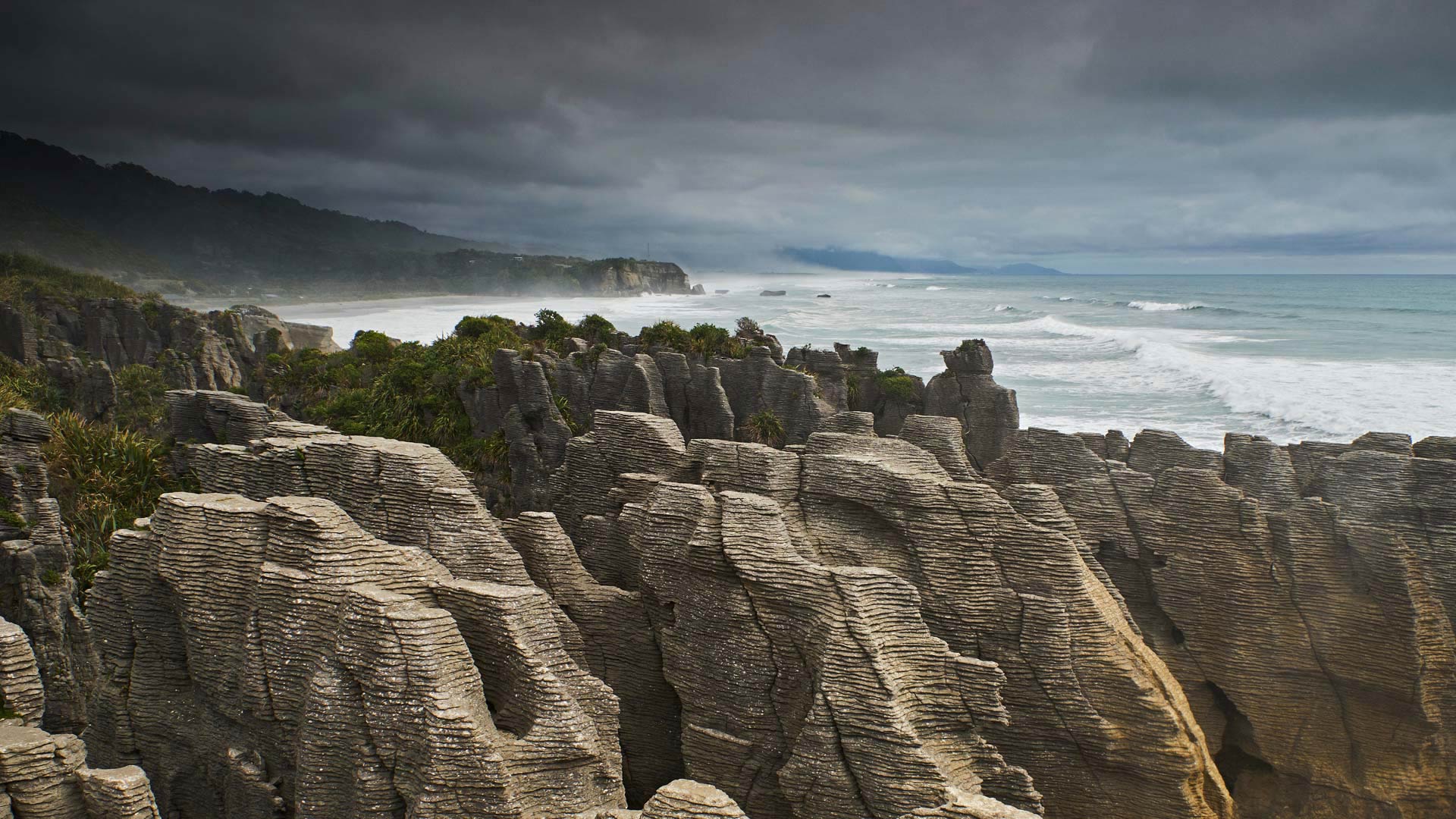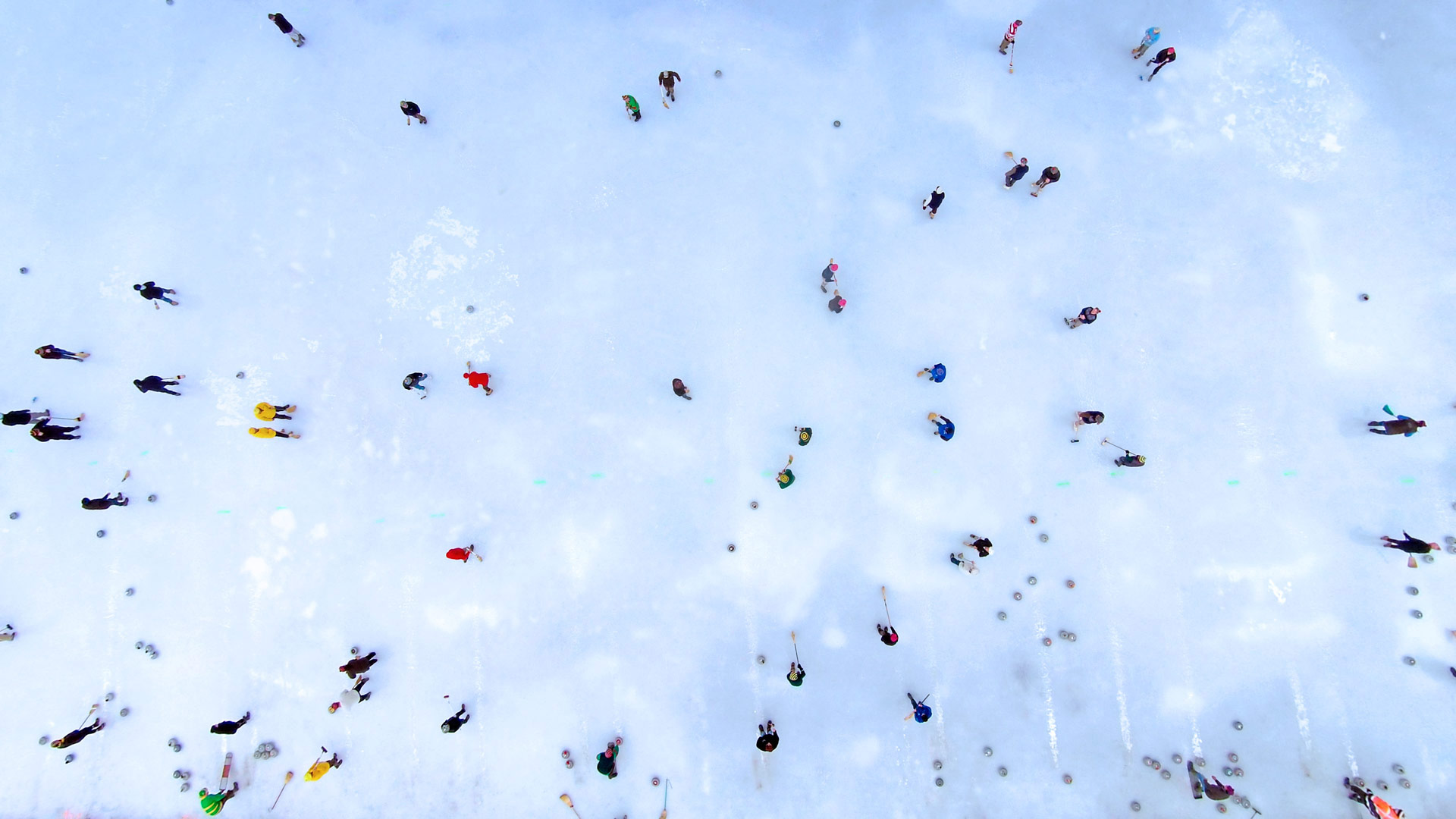雕刻师在矿山湾创作的岩雕作品,新西兰北岛陶波湖 The Mine Bay Māori Rock Carving of Ngatoroirangi by Matahi Whakataka-Brightwell on the edge of Lake Taupo, North Island, New Zealand (© Evgueni Zverev/Alamy)
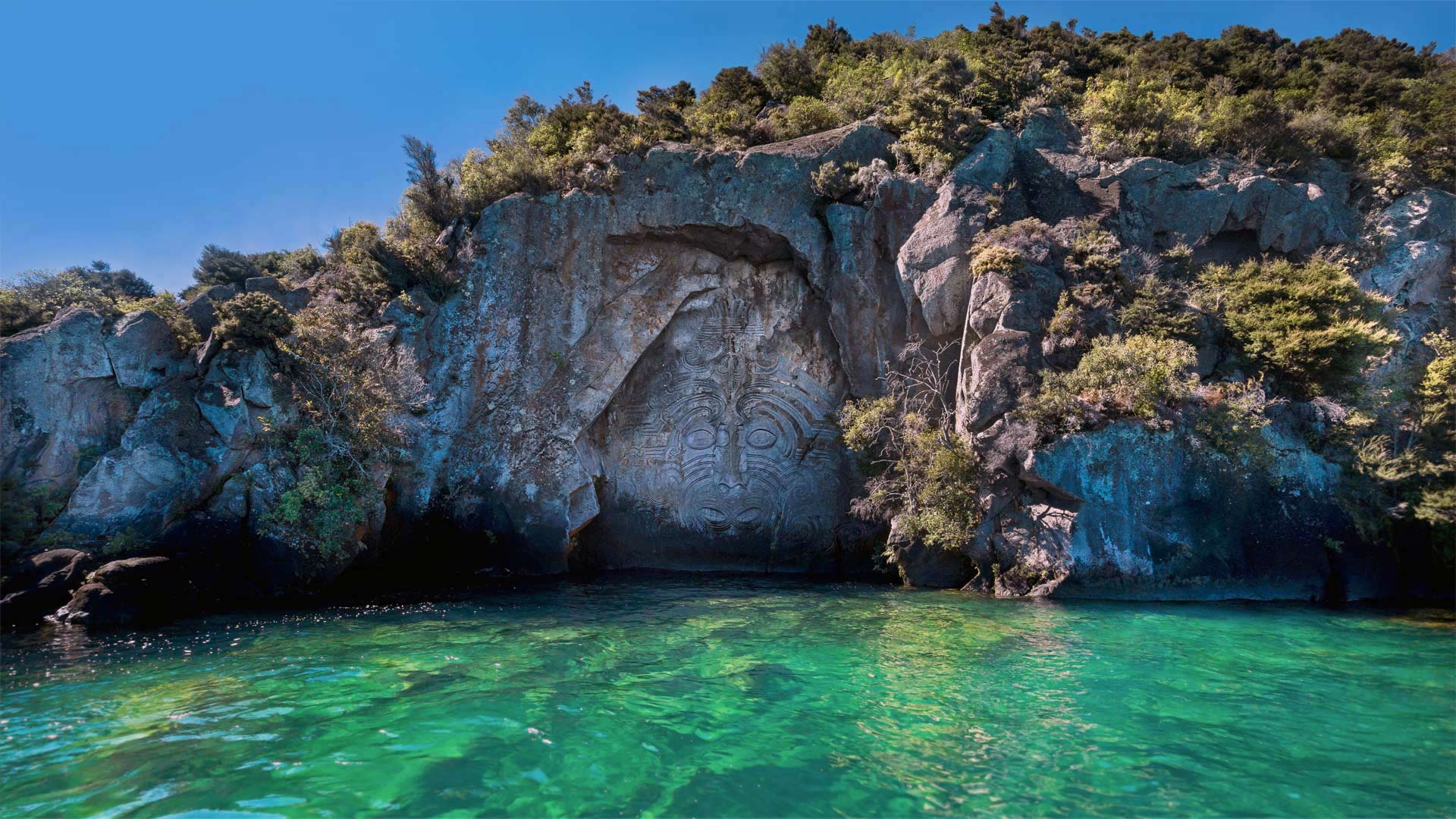
雕刻师在矿山湾创作的岩雕作品,新西兰北岛陶波湖 The Mine Bay Māori Rock Carving of Ngatoroirangi by Matahi Whakataka-Brightwell on the edge of Lake Taupo, North Island, New Zealand (© Evgueni Zverev/Alamy)
A tribute to the ancestors
To celebrate International Day of the World's Indigenous Peoples, we're on New Zealand's North Island, looking at the Ngatoroirangi rock carving in Mine Bay, by Māori artist Matahi Whakataka-Brightwell. This artwork is part of a larger collection of carvings on the edge of Lake Taupo and has become a big tourist attraction despite being accessible only by boat. Four years in the making, the work is a tribute to Māori ancestors and guardians, and the integral roles they play in the Indigenous Māori culture.
International Day of the World's Indigenous Peoples was created by the United Nations to draw attention to the distinct cultures of Indigenous peoples and to support measures that protect their rights. This year's theme is 'Leaving no one behind: Indigenous peoples and the call for a new social contract.' With this focus, the UN hopes to raise awareness about the unwritten rules, or 'social contracts,' that help communities function equitably. Historically, Indigenous peoples have been excluded from these social contracts, which were often meant only for dominant populations. This year's festivities hope to address that inequity and will include a virtual commemoration for guests to discuss how communities can redesign these contracts to be inclusive of the Indigenous and their ways of life.
向祖先致敬
为了庆祝世界土著人民国际日,我们来到新西兰北岛,观看由毛利人艺术家Matahi Whakataka Brightwell在Mine Bay创作的Ngatoroirangi岩雕。这件艺术品是陶波湖边缘更大的雕刻收藏的一部分,尽管只能乘船前往,但它已成为一个巨大的旅游景点。经过四年的创作,这部作品向毛利人的祖先和监护人以及他们在土著毛利人文化中所起的不可或缺的作用致敬。
联合国设立了世界土著人民国际日,以提请人们注意土著人民的独特文化,并支持保护其权利的措施。今年的主题是“不抛弃任何人:土著人民和呼吁新的社会契约”。联合国希望以此为重点,提高人们对帮助社区公平运作的不成文规则或“社会契约”的认识。从历史上看,土著人民被排除在这些社会契约之外,而这些契约往往只针对占主导地位的人口。今年的庆祝活动希望解决这一不平等问题,并将包括一个虚拟的纪念活动,供客人讨论社区如何重新设计这些合同,使之包含土著人及其生活方式。
奥拉基库克山国家公园中的塞夫顿山,新西兰南岛 Mount Sefton in Aoraki/Mount Cook National Park, South Island, New Zealand (© AWL Images/Danita Delimont)
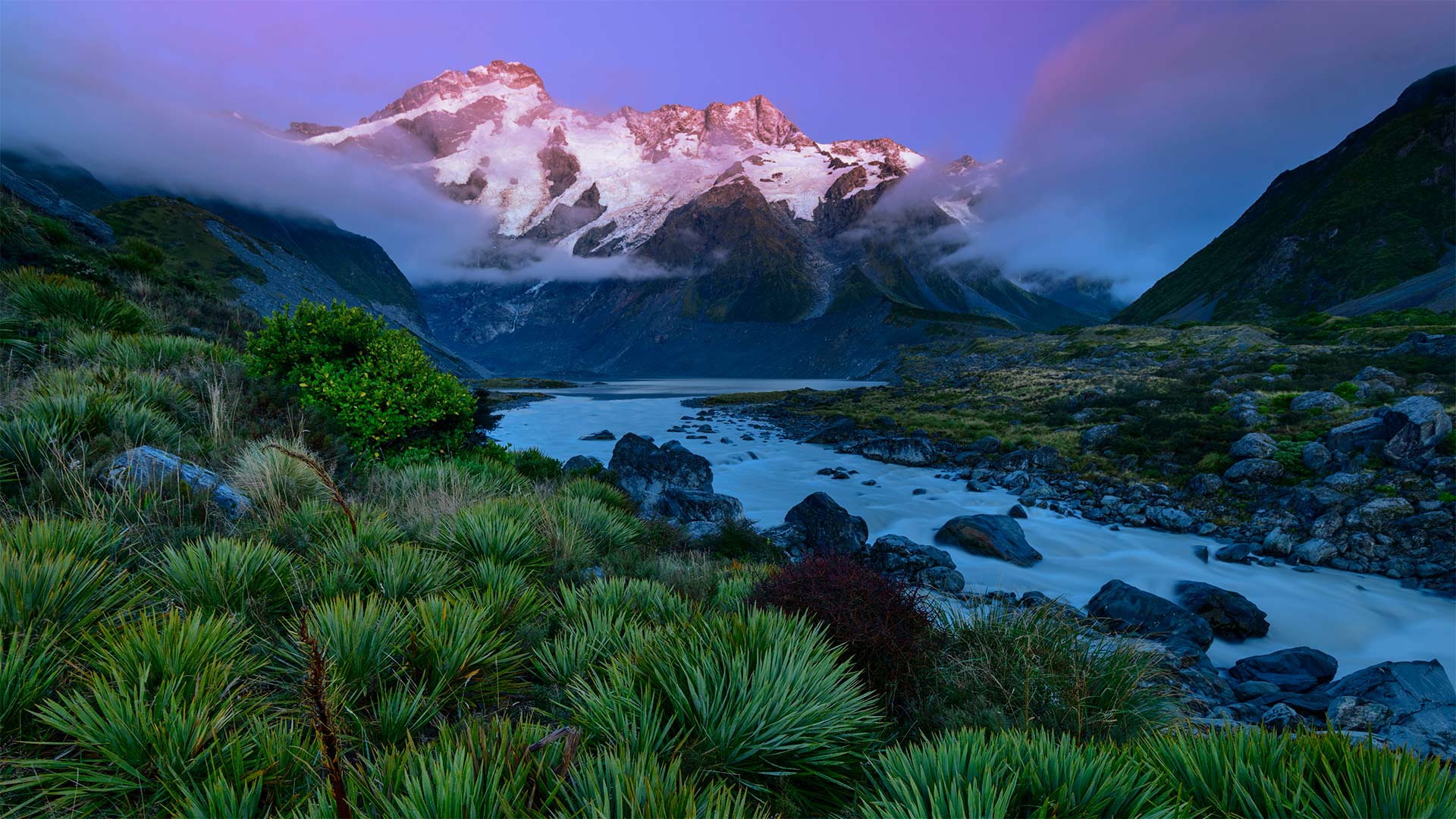
奥拉基库克山国家公园中的塞夫顿山,新西兰南岛 Mount Sefton in Aoraki/Mount Cook National Park, South Island, New Zealand (© AWL Images/Danita Delimont)
Where is this gorgeous peak?
This spectacular landscape might just be the perfect place to celebrate Waitangi Day, New Zealand's national holiday. It commemorates the 1840 treaty between Britain and some 500 Māori chiefs that established British law in the island nation. The Treaty of Waitangi is considered New Zealand's founding document and a cornerstone in the country's history. Another important legacy of the treaty is that it provided the framework for political relations between New Zealand's government and the indigenous Māori people.
Perhaps nothing symbolizes negotiations between those two parties better than the land you see here, which has been preserved as a national park since 1953. Our image shows the glacier-capped peak of Mount Sefton, one of the many tall mountains here in the Southern Alps. Just a few miles away towers New Zealand's tallest peak, originally called Aoraki by the Māori, who named it after a mythological figure. The mountain was given its English name, Mount Cook, in 1851, in honor of Captain James Cook, the British explorer who circumnavigated and mapped the country in the 1770s. An agreement in 1998 between the government and Māori leaders officially renamed both the peak and the park to Aoraki/Mount Cook. It's one of the few renamed areas in New Zealand where the Māori name precedes the English.
这座美丽的山峰在哪里?
这片壮观的风景可能正是庆祝新西兰国庆日怀唐日的最佳场所。它纪念1840年英国与大约500名毛利人酋长签订的条约,该条约确立了英国在这个岛国的法律。《怀唐伊条约》被认为是新西兰的创始文件和国家历史的基石。该条约的另一个重要遗产是,它为新西兰政府与土著毛利人之间的政治关系提供了框架。
也许没有什么比你在这里看到的这块土地更能代表两党之间的谈判了,这块土地自1953年以来一直被保留为国家公园。我们的图片显示了塞夫顿山冰川覆盖的山峰,它是阿尔卑斯山脉南部众多高山之一。就在几英里远的地方,矗立着新西兰最高的山峰,毛利人最初称之为Aoraki,以一个神话人物的名字命名。1851年,为了纪念英国探险家詹姆斯·库克上尉(James Cook),这座山被命名为库克山(Mount Cook),詹姆斯·库克上尉于1770年代环游并绘制了该国地图。1998年,政府与毛利人领导人达成协议,正式将山顶和公园更名为Aoraki/Mount Cook。这是新西兰为数不多的几个更名地区之一,毛利人的名字先于英语。
塔拉纳基山,新西兰艾格蒙特国家公园 Mount Taranaki, Egmont National Park, North Island, New Zealand (© Francesco Vaninetti/plainpicture)
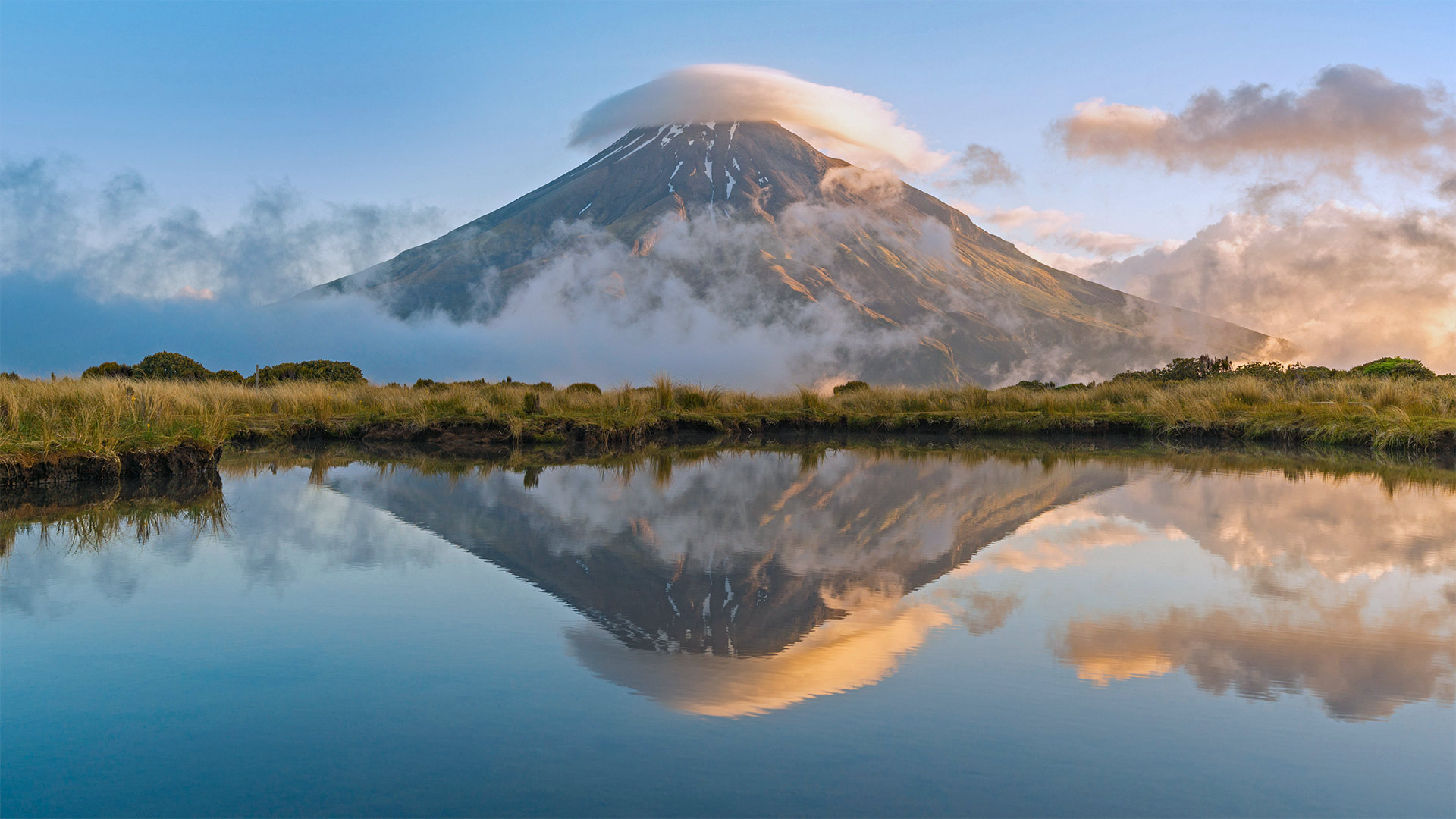
塔拉纳基山,新西兰艾格蒙特国家公园 Mount Taranaki, Egmont National Park, North Island, New Zealand (© Francesco Vaninetti/plainpicture)
New Zealand's loneliest mountain
According to the legends of New Zealand's aboriginal Māori people, the lonely Mount Taranaki wasn't always lonely. Taranaki, the story goes, once lived among other mountains in the North Island's center. But Taranaki feuded with the powerful volcano Tongariro over the love of the pretty peak Pīhanga. In their epic battle, the now flat-topped Tongariro lost his head but emerged victorious. The vanquished Taranaki wandered west, cutting trenches as he trudged to the shore and filling them with lovesick tears to create the region's rivers.
Now that Taranaki's settled in, the still-active stratovolcano's slopes and foothills comprise one of New Zealand's oldest national parks. Whether or not he's gotten over Pīhanga after untold millennia, Taranaki continues to compete with Tongariro even through modern myth: Taranaki had a star turn as Mount Fuji in background shots for 'The Last Samurai,' while the Tongariro area stood in for the cursed realm of Mordor in the 'Lord of the Rings' films.
特卡波湖岸上的羽扇豆,新西兰 Lupins on the shores of Lake Tekapo in New Zealand (© Stanislav Kachyna/Shutterstock)
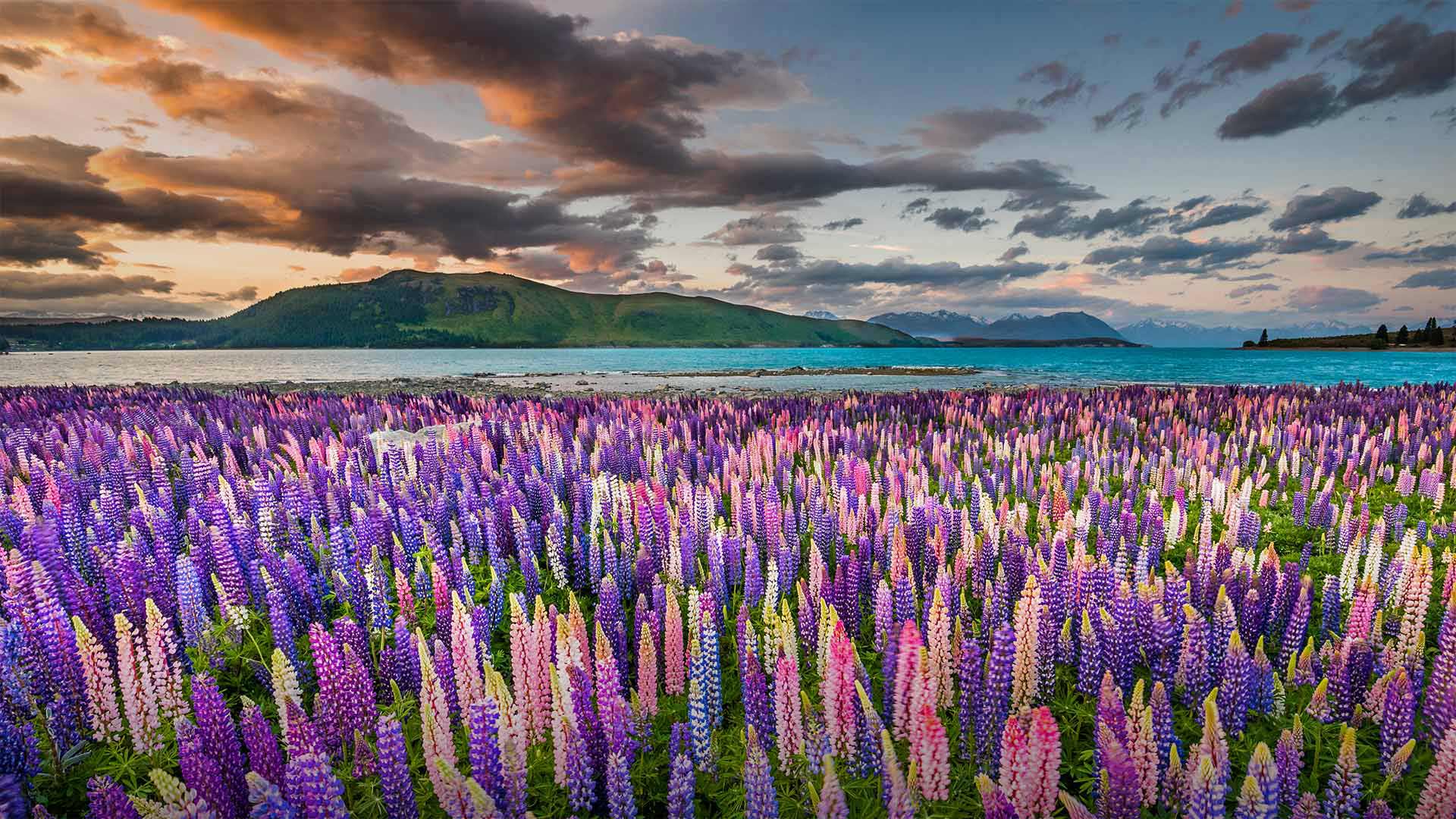
特卡波湖岸上的羽扇豆,新西兰 Lupins on the shores of Lake Tekapo in New Zealand (© Stanislav Kachyna/Shutterstock)
What are these blooms?
Lupins usually hit peak bloom around mid- to late-November in the Mackenzie region on New Zealand's South Island. This image shows the burst of color along the shores of Lake Tekapo, famed for its annual lupin blooms. The colorful carpets of purples, pinks, blues, and whites along waterways and roads look stunning, drawing tourists to the area, and locals appreciate the economic benefits that come with these visitors. But lupins hail from North America, and in New Zealand, they're considered invasive species that crowd out native flora, ruining the habitat for birds like the wrybill, banded dotterel, and other species that live along the waterside.
Beloved by some, rued by others, lupins are said to have taken hold here thanks to local resident Connie Scott. As the story goes, back in the 1950s, Scott scattered lupin seeds along a main highway to add some color to the barren landscape and the blooms have been spreading ever since. Scott's remembered these days as the 'Lupin Lady.' A beautiful legacy? Suppose it depends on your point of view.
马塔马塔附近的霍比特人村,新西兰北岛 Hobbiton, near Matamata, North Island, New Zealand (© 500px Asia/Getty Images)
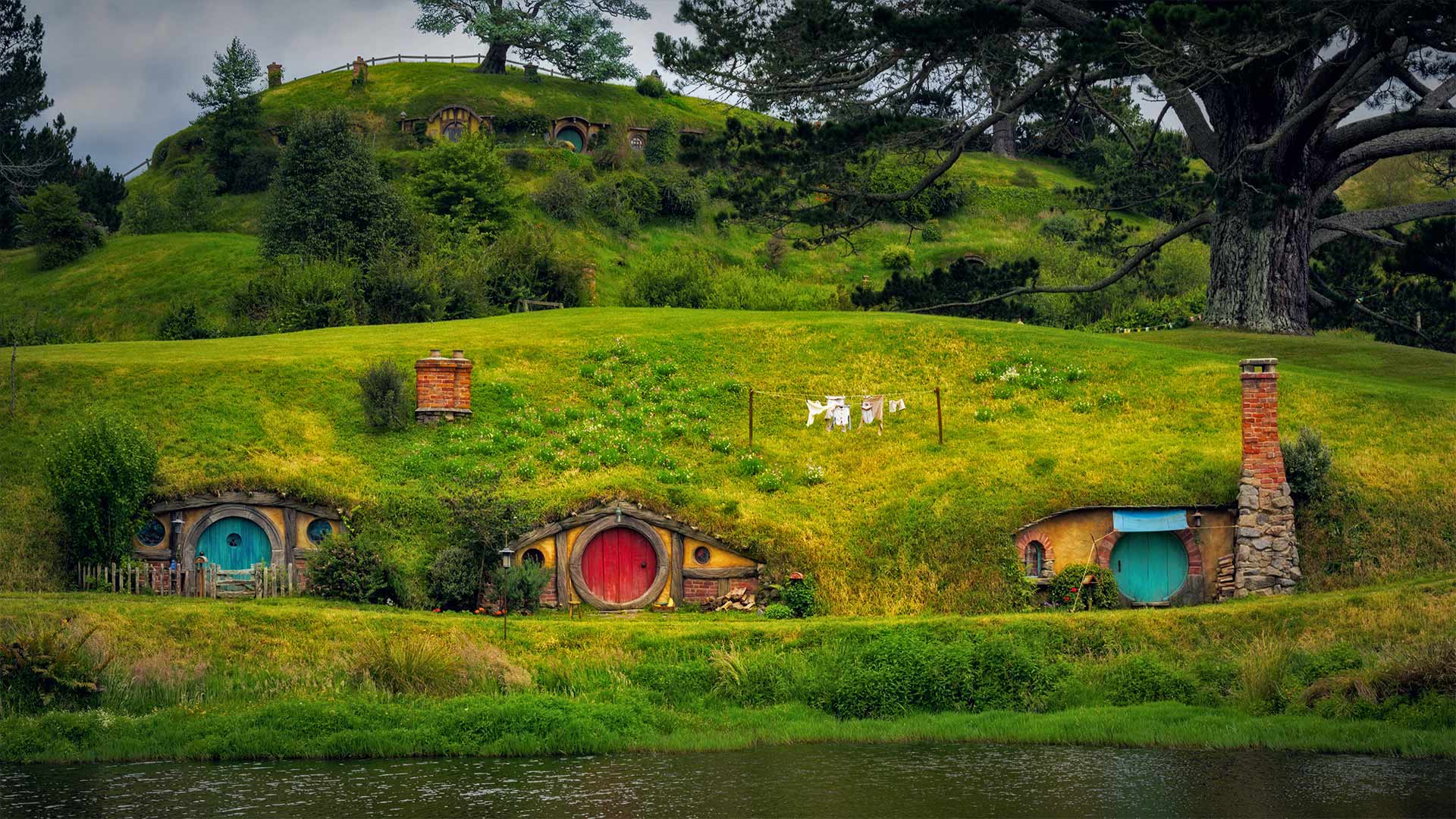
马塔马塔附近的霍比特人村,新西兰北岛 Hobbiton, near Matamata, North Island, New Zealand (© 500px Asia/Getty Images)
Happy Hobbit Day
Today is Hobbit Day, marking the anniversary of the 'Long-expected Party,' which sets in motion the 'Lord of the Rings' book series. September 22 is the birthday of both Bilbo and Frodo Baggins, the protagonists of 'The Hobbit' and 'The Lord of the Rings' respectively.
Fans of the film adaptations of those stories will have no problem identifying today's image as Hobbiton in the Shire (though it is actually a set built in the countryside near Matamata on New Zealand's North Island.) You can celebrate Hobbit Day by walking around barefoot all day and having seven meals like a hobbit, or just by watching (or re-watching) any or all of the six films in the series. It's would be only fitting this year since the stories chronical a mythological struggle between darkness and light and today is the autumnal equinox.
怀波瓦森林中一棵名为Te Matua Ngahere的巨型贝壳杉树 ,新西兰北地 Te Matua Ngahere, a giant kauri tree growing in Waipoua Forest, Northland, New Zealand (© Kim Westerskov/Getty Images)
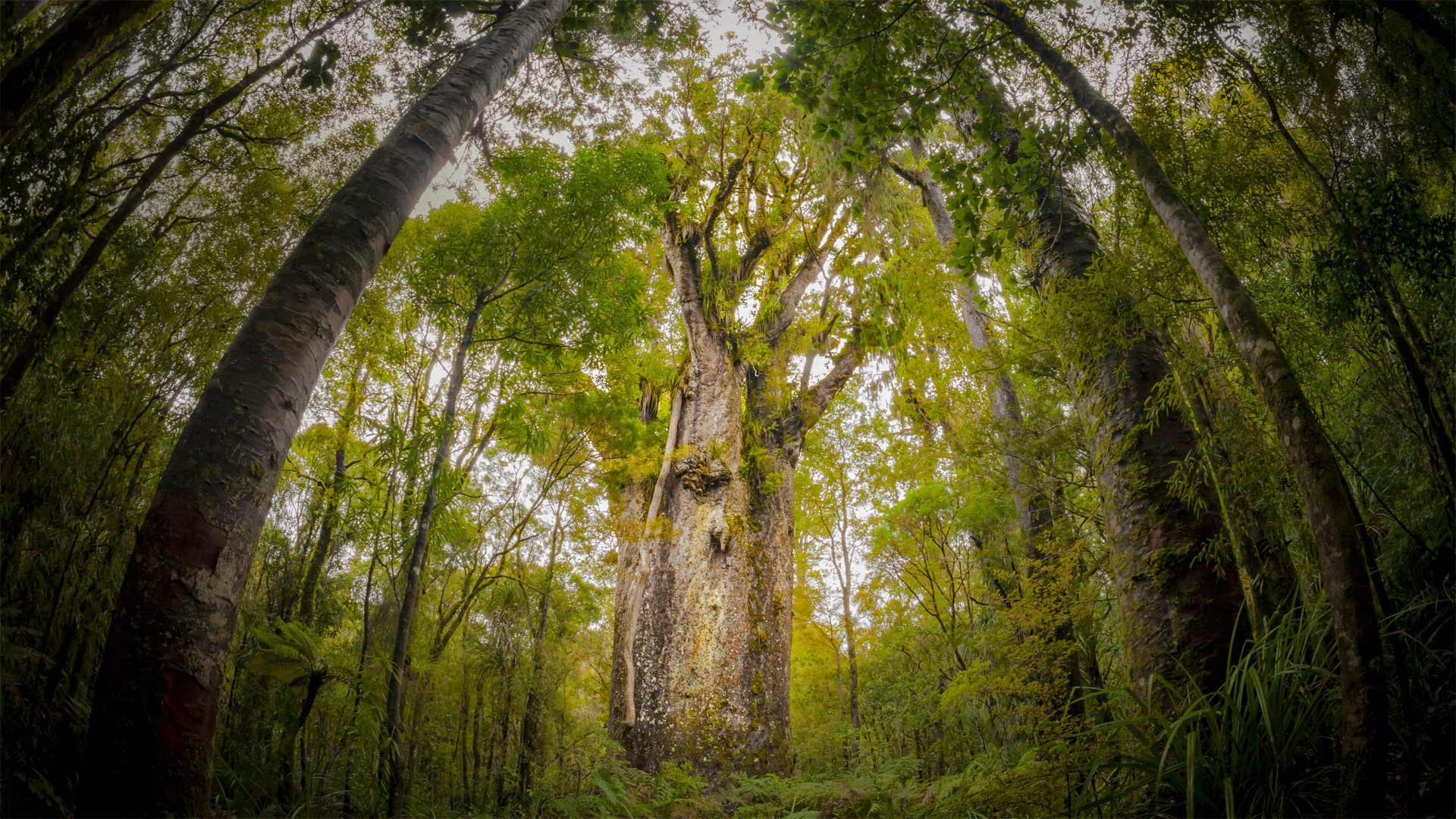
怀波瓦森林中一棵名为Te Matua Ngahere的巨型贝壳杉树 ,新西兰北地 Te Matua Ngahere, a giant kauri tree growing in Waipoua Forest, Northland, New Zealand (© Kim Westerskov/Getty Images)
50 years of Earth Day
For Mother Earth's big day, we're shining the spotlight on a tree known as 'Father of the Forest,' or Te Matua Ngahere in the Maori language. This giant kauri tree lives in the Waipou Rainforest of New Zealand's North Island. At more than 1,500 years old years old and more than 52 feet around, it's both one of the oldest trees in New Zealand and one of the largest. It's long been revered by the Maori, and is protected by Maori elders.
We suspect this ancient tree must have some extra bounce in its branches today for the 50th anniversary of Earth Day. On this day in 1970, some 20 million Americans rallied in communities across the nation to raise awareness of environmental issues. The landmark event is credited for sparking passage in the 1970s of the most comprehensive environmental reform legislation in US history, including the creation of the Clean Air, Clean Water, and Endangered Species Acts, as well as the Environmental Protection Agency (EPA). Earth Day is now celebrated in nearly 200 countries and has grown to include Earth Week, and even Earth Month celebrations. That's all good news for Earth's residents, big and small.
马尔堡峡湾鸟瞰图,新西兰 Aerial view of Marlborough Sounds, New Zealand (© Mathias Ortmann/Getty Images)
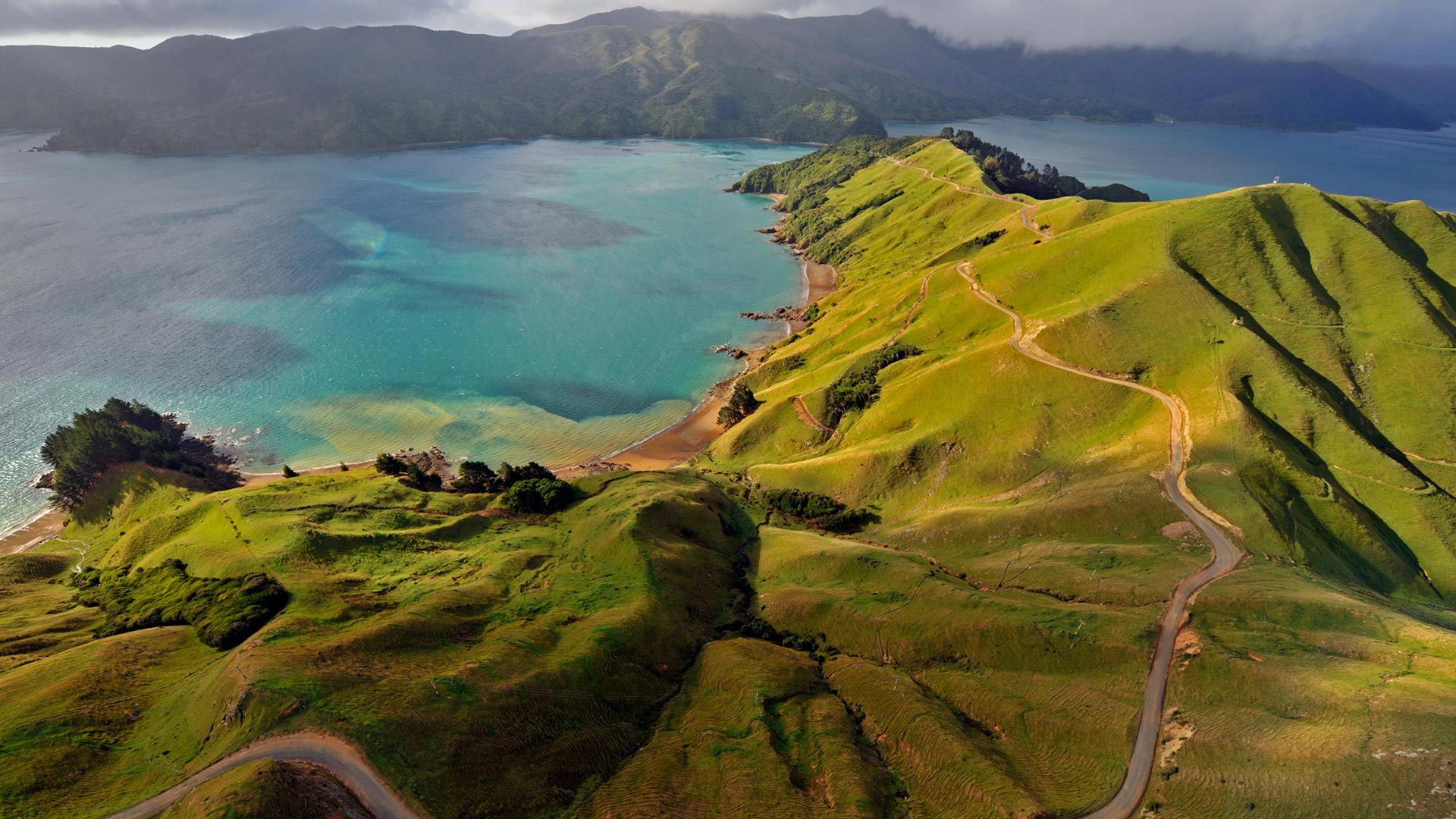
马尔堡峡湾鸟瞰图,新西兰 Aerial view of Marlborough Sounds, New Zealand (© Mathias Ortmann/Getty Images)
Land ho in New Zealand 250 years ago
We're looking at Marlborough Sounds, a network of ancient sunken river valleys located at the northern tip of New Zealand's South Island. But it was on the North Island, 250 years ago, that New Zealand was spotted by Captain James Cook from the HMS Endeavour. The main purpose of Cook's voyage to the Pacific was to sail to Tahiti and observe the transit of Venus across the face of the sun. Only after completing this task did Cook unseal the rest of his orders and learn he was to search the South Pacific for signs of a fabled great southern continent, Terra Australis Incognito. This was a hypothetical southern landmass that European Renaissance geographers thought must exist in order to counterbalance the Northern and Southern Hemispheres.
Of course, Cook never found Terra Australis, but with the help of a Tahitian named Tupaia, who had extensive knowledge of Pacific geography, and armed with the previous findings of explorer Abel Tasman from 1642, Cook sailed on to New Zealand. There, he and his crew built upon Tasman's work, becoming the first to circumnavigate and chart New Zealand's North and South Islands.
新西兰的萨瑟兰瀑布和奎尔湖 Sutherland Falls and Lake Quill in New Zealand (© Michael Rathmayr/plainpicture)
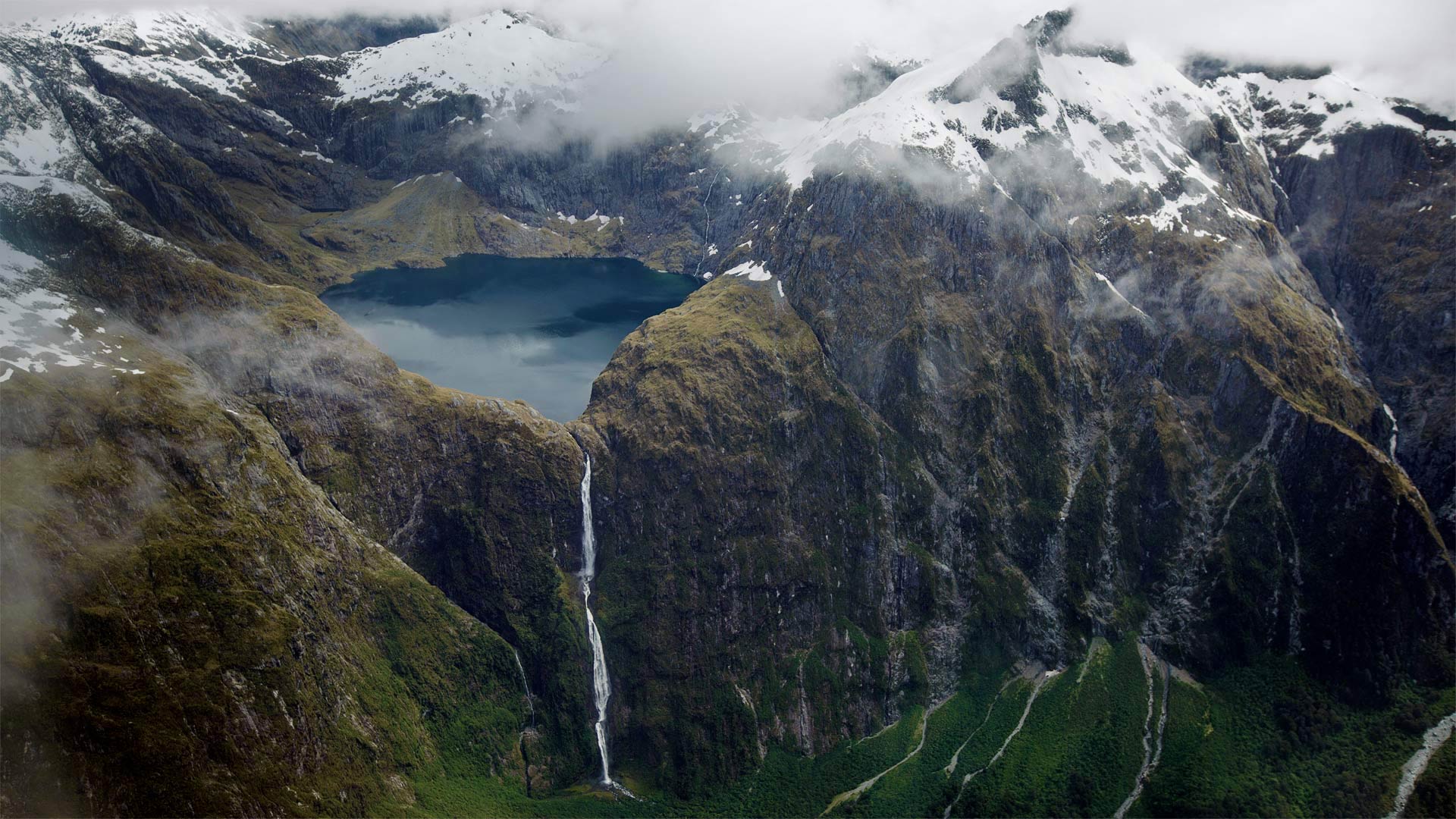
新西兰的萨瑟兰瀑布和奎尔湖 Sutherland Falls and Lake Quill in New Zealand (© Michael Rathmayr/plainpicture)
Sutherland Falls in Fiordland National Park
Sutherland Falls spills over the side of Lake Quill in the jagged, glacier-carved landscape of Fiordland National Park on New Zealand's South Island. For years, it was believed to be the tallest waterfall in the world, thanks in part to a rough estimate by Scottish explorer Donald Sutherland, the first European to see the falls. Later, more scientific surveys proved this estimate to be significantly inflated, but Sutherland Falls is still 1,900 feet tall, which is plenty high in our book.
It's probably pretty cold out in the Fiordland wilderness today, as the Southern Hemisphere is in the midst of winter. While the Northern Hemisphere has tilted toward the sun, giving us the long, warm days of summer, the Southern Hemisphere is tilted away, so the days are short and nights are cold.
